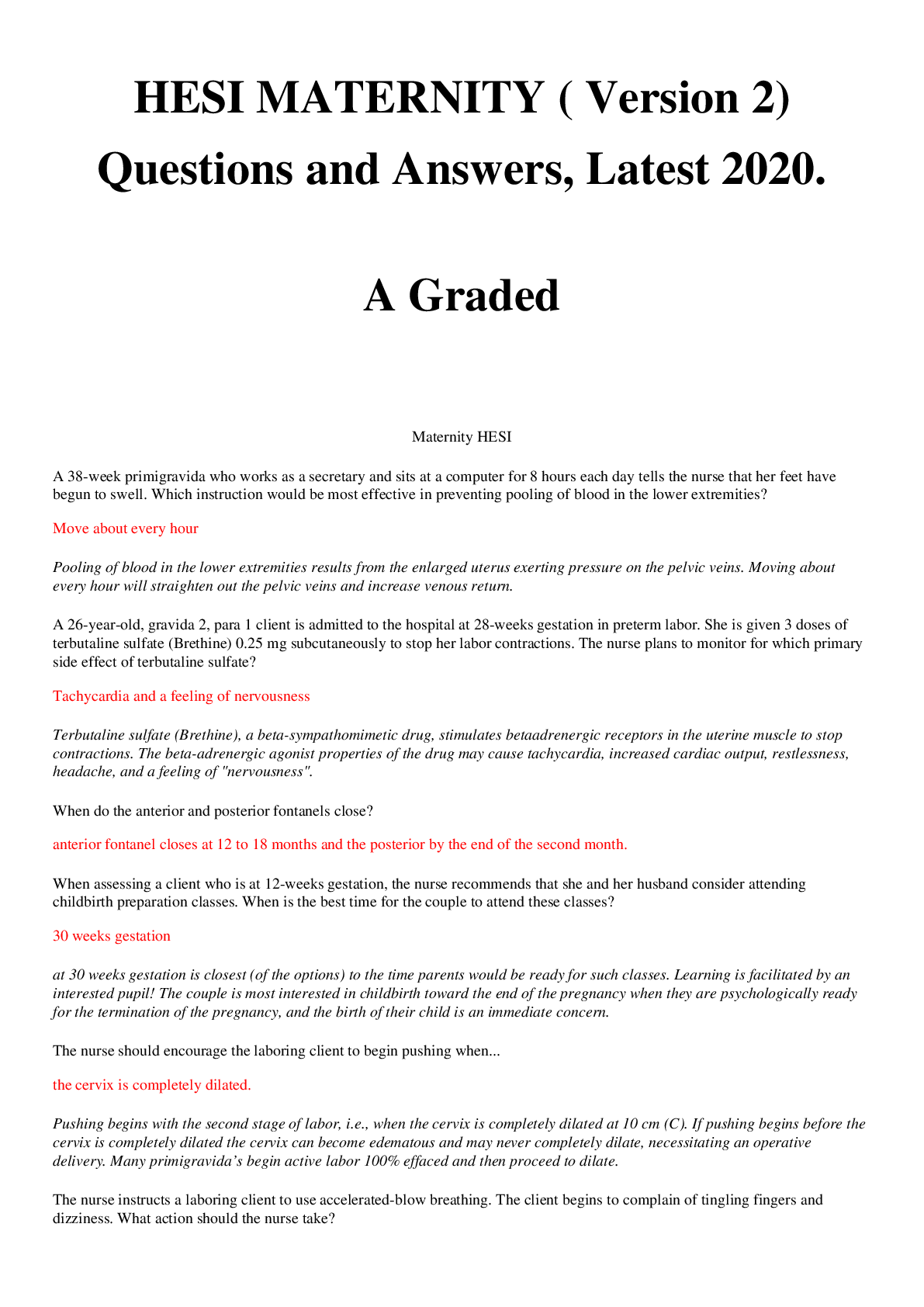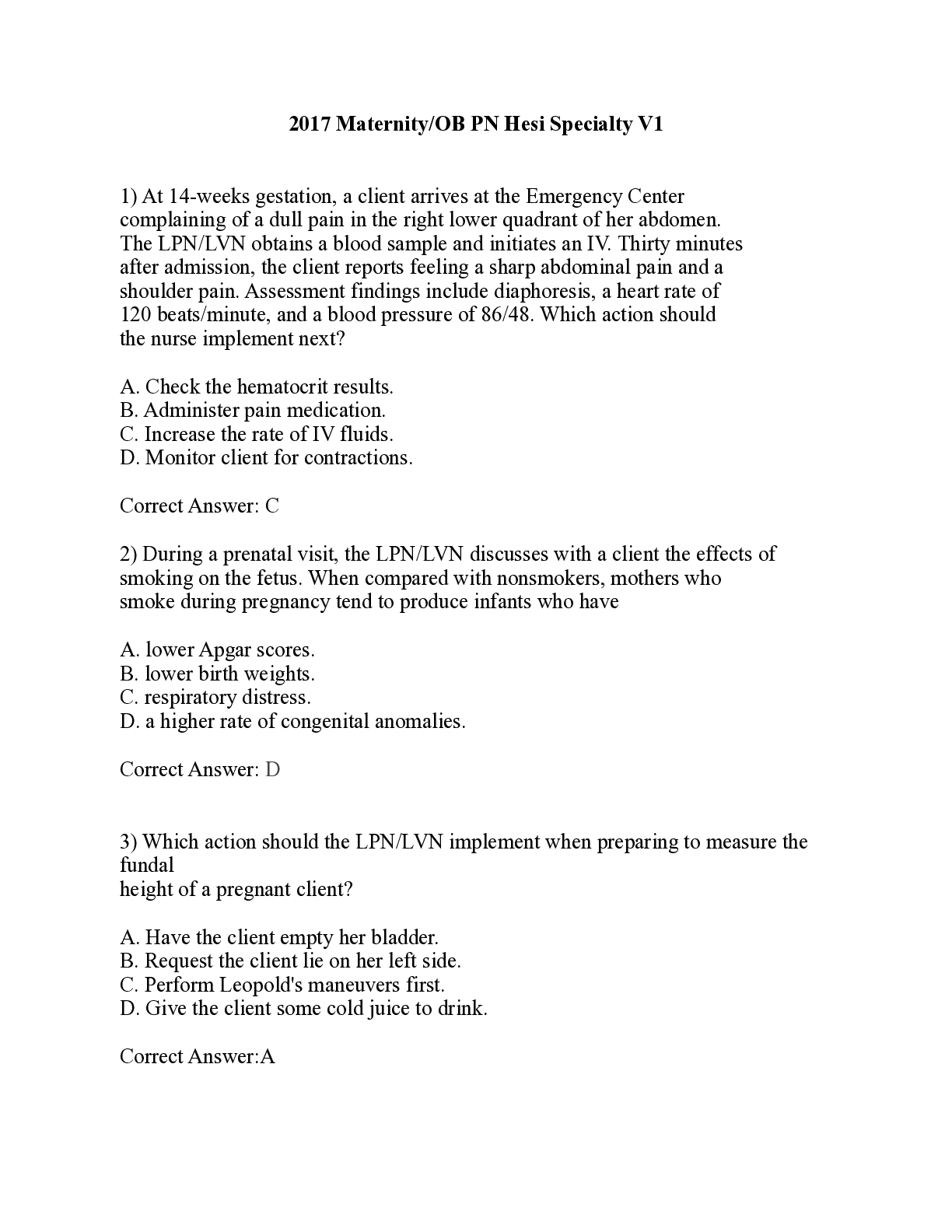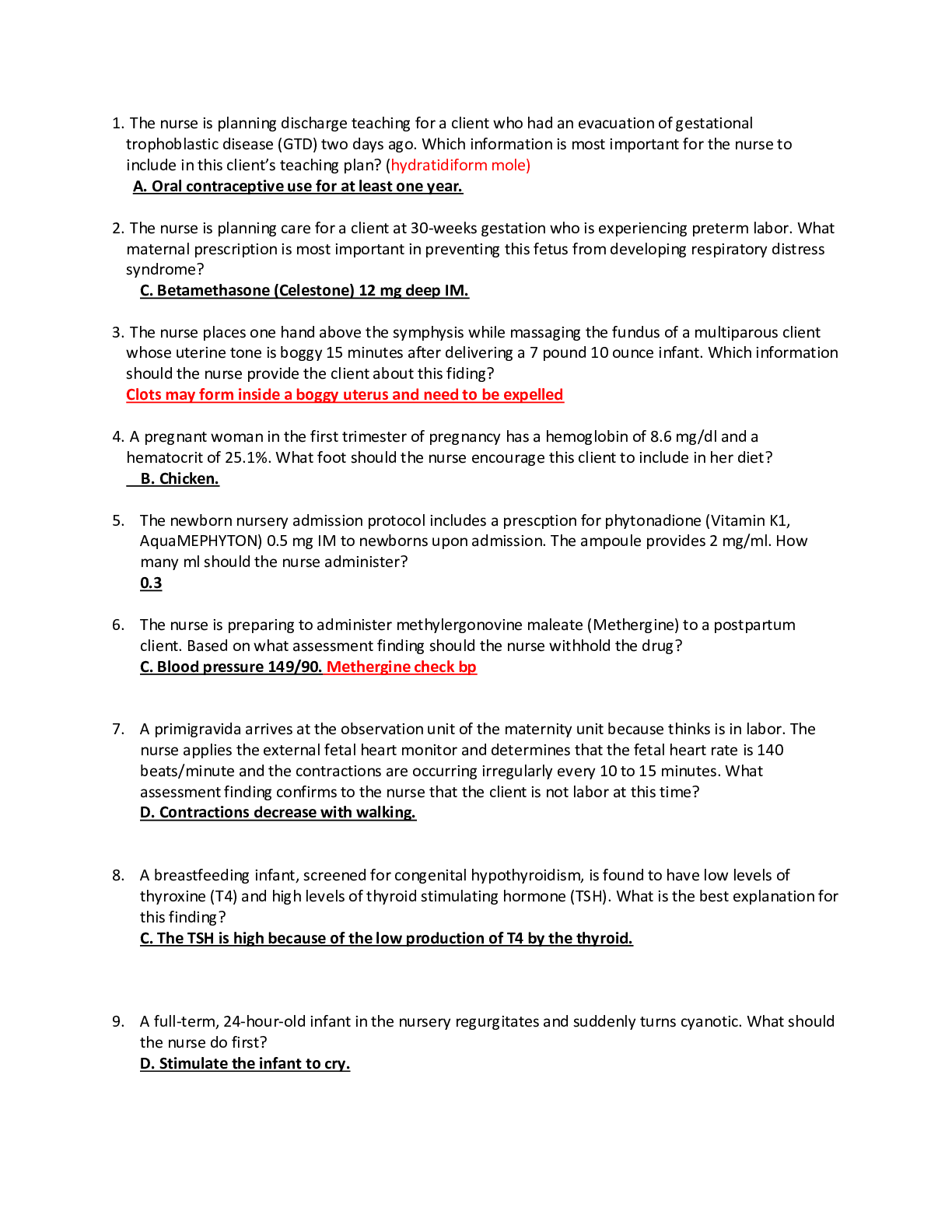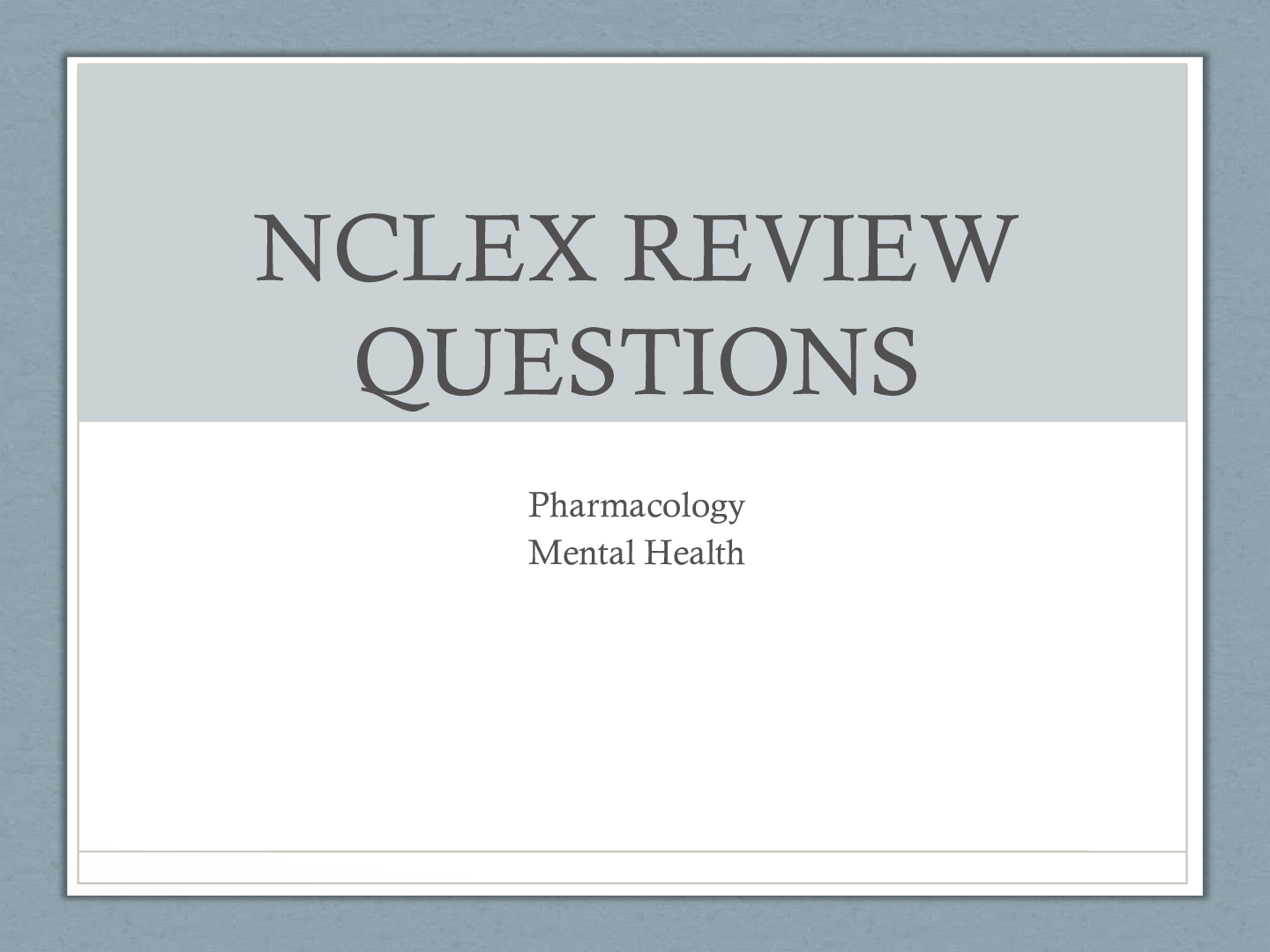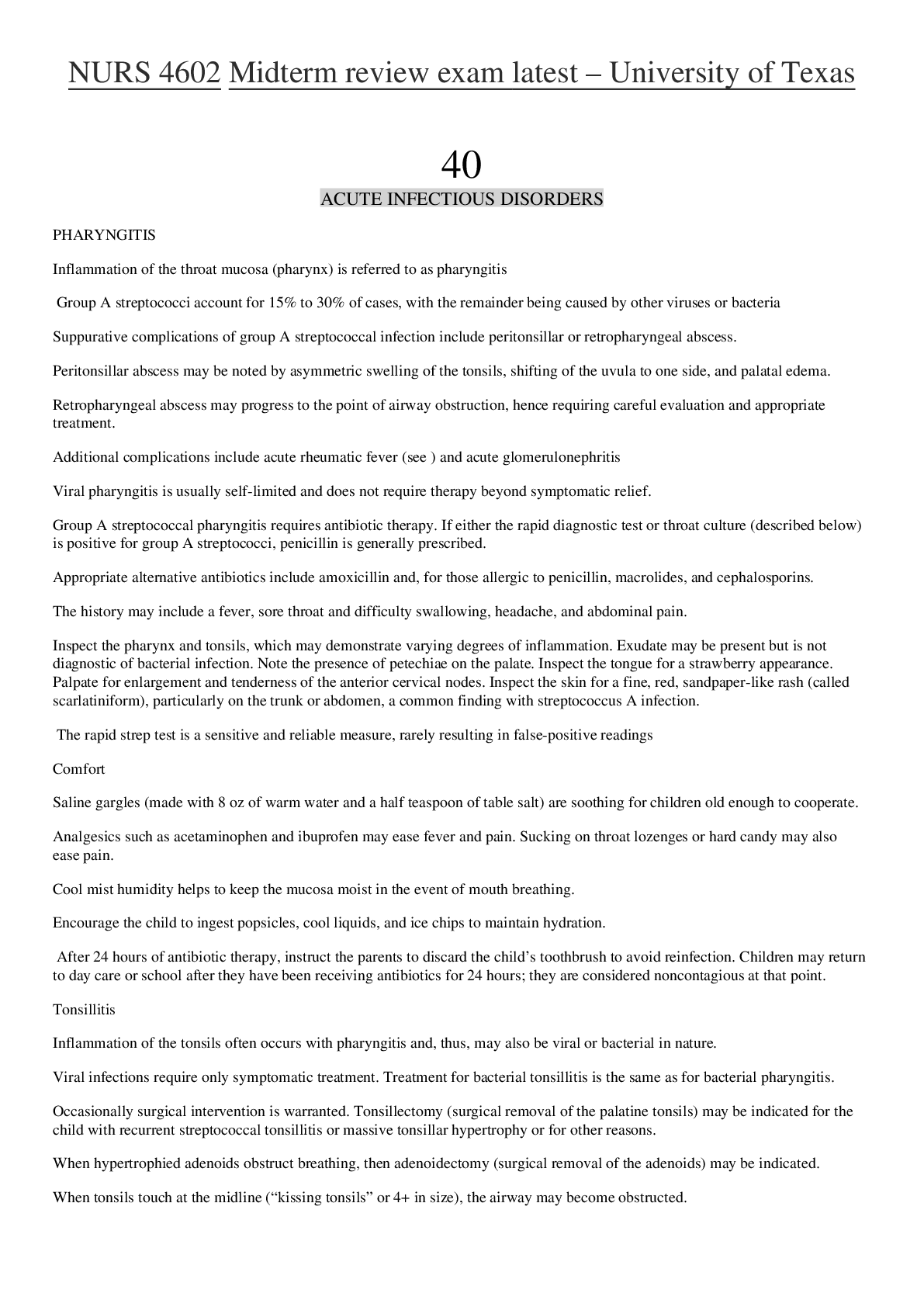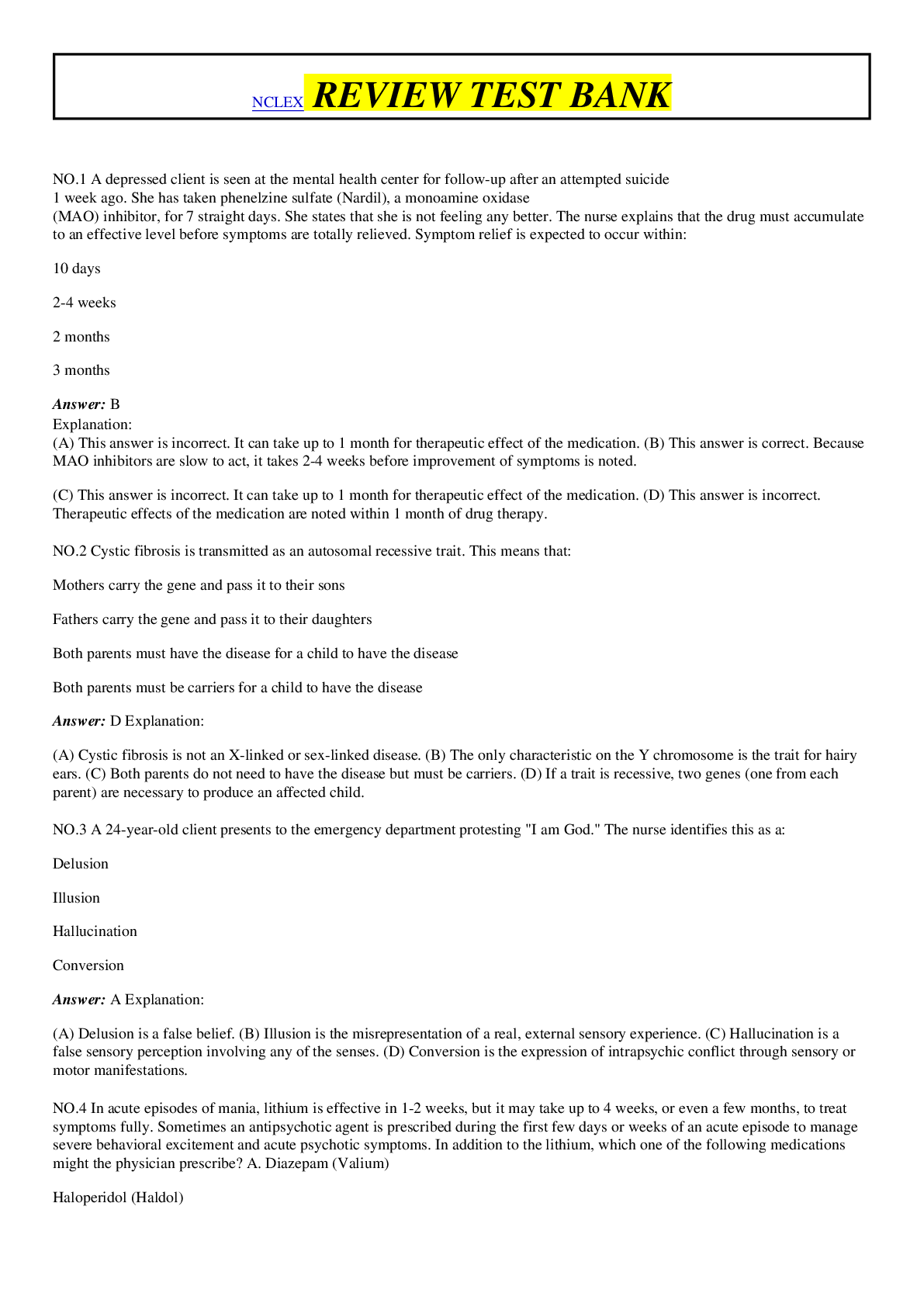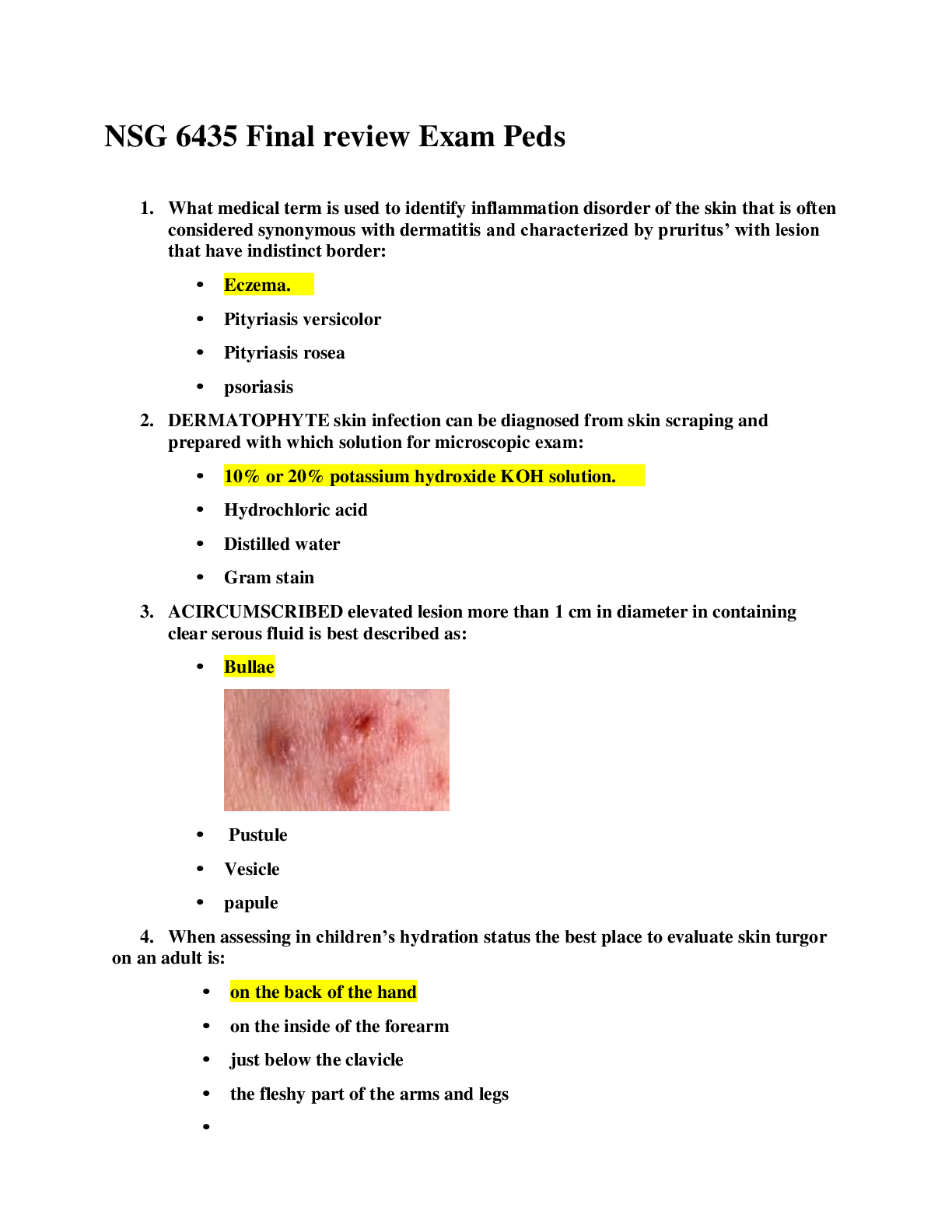Health Care > EXAM > NURS 612 Key Points to Review EXAM 3 CUMULATIVE FINAL EXAM. Complete Study Guide. (All)
NURS 612 Key Points to Review EXAM 3 CUMULATIVE FINAL EXAM. Complete Study Guide.
Document Content and Description Below
NURS612 Key Points to Review EXAM #3 CUMULATIVE FINAL EXAM KEY POINTS FOR WEEKS 9-14 **Please note this is an optional tool for students to use in preparation for Exam #3. Completing and comprehen... ding this review may or may not contain all of the content on Exam #3. Key Point to Review- Abdomen STUDENT NOTES What are examples of appropriate history of present illness (HPI) questions you may ask a patient with a chief complaint of an abdominal issue? 1. Onset and duration: when it began; sudden or gradual 2. Character: dull, sharp 3. Location and onset: change in location over time, radiating 4. Associated symptoms: nausea, vomiting, diarrhea Describe how you would inspect the abdomen. inspect the abdomen, perform the following. • Using tangential lighting, inspect the abdomen for four surface characteristics. First, observe the skin color. It may vary greatly but should have no jaundice, cyanosis, redness, bruises, or discoloration. Second, check for nodules and other lesions, which should not be present. Third, note any scars and draw their location, configuration, and relative size on an illustration of the abdomen. Fourth, assess the venous return. Above the umbilicus, venous return should be toward the head. Below the umbilicus, it should be toward the feet. Next, inspect the abdominal contour and symmetry. The contour is the abdominal profile from the rib margin to the pubis. It normally may be flat, rounded, or scaphoid. The umbilicus should be centrally located and may be inverted or may protrude slightly. N. Zimmermann Spring 2016 NURS612 Key Points to Review EXAM #3 CUMULATIVE FINAL EXAM KEY POINTS FOR WEEKS 9-14 **Please note this is an optional tool for students to use in preparation for Exam #3. Completing and comprehending this review may or may not contain all of the content on Exam #3. Contralateral areas of the abdomen should be symmetrical in appearance and contour and should have no distention or bulges. To elicit hidden masses or bulges, have the patient take a deep breath and hold it. The abdomen should remain smooth and symmetrical. Next, have the supine patient raise their head from the table as you inspect the abdomen. Note any masses, hernia, or muscle separation. With the patient’s head at rest, observe for three types of abdominal movement. First, inspect for smooth, even movement with respiration. Second, assess for surface motion from peristalsis. In a thin patient, it normally may be visible. Otherwise, it may signal an intestinal obstruction. Third, note any aortic pulsation in the upper midline. Although pulsations may be visible in a thin patient, marked pulsations suggest a disorder. Why do you auscultate the abdomen before you percuss or palpate? Remember to auscultate before you percuss or palpate because these techniques can alter bowel sounds. Describe how and where you auscultate the abdomen. What are the three Using the diaphragm of a warmed stethoscope, listen N. Zimmermann Spring 2016 NURS612 Key Points to Review EXAM #3 CUMULATIVE FINAL EXAM KEY POINTS FOR WEEKS 9-14 **Please note this is an optional tool for students to use in preparation for Exam #3. Completing and comprehending this review may or may not contain all of the content on Exam #3. additional sounds you assess? What is normal when you auscultate the abdomen? What is abnormal? for bowel sounds and note their frequency and character. Expect to hear clicks and gurgles at a rate of 5 to 35 per minute. Note unexpected findings, such as increased or decreased bowel sounds or high-pitched tinkling sounds. Auscultate for three additional sounds. First, use the stethoscope diaphragm to detect highpitched friction rubs over the liver and spleen. Second, use the stethoscope bell to check for bruits over the aortic, renal, iliac, and femoral arteries. Third, use the stethoscope bell to assess for a soft, continuous, low-pitched venous hum in the epigastric area and around the umbilicus. Describe how you palpate the abd. What are you assessing when you palpate, light, moderate and deep palpation? What are the normal and abnormal findings? What do the abnormal findings indicate as possible differential diagnosis? How do you palpate for the various abd structrues? What are the normal and abnormal findings? What do the findings indicate as possible differential diagnoses? To palpate the abdomen, perform the following. Using light palpation, systematically assess all quadrants. But first, try to relax the abdominal muscles. For example, place a small pillow under the patient’s head and slightly flexed knees, warm your hands, take a slow and gentle approach, and save any tender areas for last. For light palpation, press in N. Zimmermann Spring 2016 NURS612 Key Points to Review EXAM #3 CUMULATIVE FINAL EXAM KEY POINTS FOR WEEKS 9-14 **Please note this is an optional tool for students to use in preparation for Exam #3. Completing and comprehending this review may or may not contain all of the content on Exam #3. no more than 1 cm with the palmar surface of your fingers. Expect the abdomen to feel smooth and soft. Note any resistance or tenderness. And watch for guarding, which should alert you to proceed with caution. Using moderate palpation, systematically assess all quadrants in two ways. First, palpate with the palmar surface of your fingers. This may elicit tenderness that was not produced by light palpation. Second, palpate with the side of your hand throughout the respiratory cycle. As the patient inhales, you may feel the liver and spleen bump gently against your hand. Using deep palpation, systematically assess all quadrants with the palmar surface of your fingers. If a patient’s obesity or muscular resistance makes deep palpation difficult, try bimanual palpation with one hand on top of the other. With either technique, feel for the rectus abdominis muscles, aorta, and portions of the colon. Note any tenderness. If you detect a mass, evaluate its location, size, shape, consistency, N. Zimmermann Spring 2016 NURS612 Key Points to Review EXAM #3 CUMULATIVE FINAL EXAM KEY POINTS FOR WEEKS 9-14 **Please note this is an optional tool for students to use in preparation for Exam #3. Completing and comprehending this review may or may not contain all of the content on Exam #3. tenderness, pulsation, mobility, and movement with respiration. To see if the mass is superficial or intraabdominal, palpate as the patient lifts his or her head off the table. A superficial mass will remain palpable; an intraabdominal mass will not. Palpate the umbilical ring and periumbilical area. The umbilical ring should feel round and regular. The area should have no bulges, nodules, or granulation. Palpate for specific abdominal structures. For the liver, press in and feel for its edge at the right costal margin as the patient takes a deep breath. If palpable, the liver should feel firm, smooth, even, and nontender. For the gallbladder, palpate below the liver margin at the lateral border of the rectus abdominus muscle. A healthy gallbladder is not palpable. For the spleen, press in over the left costal margin as the patient takes a deep breath. The spleen is not usually palpable. For the kidneys, assess the right and left organs separately, placing one hand on the flank and the other hand on the costal margin. As the patient [Show More]
Last updated: 1 year ago
Preview 1 out of 64 pages
Instant download
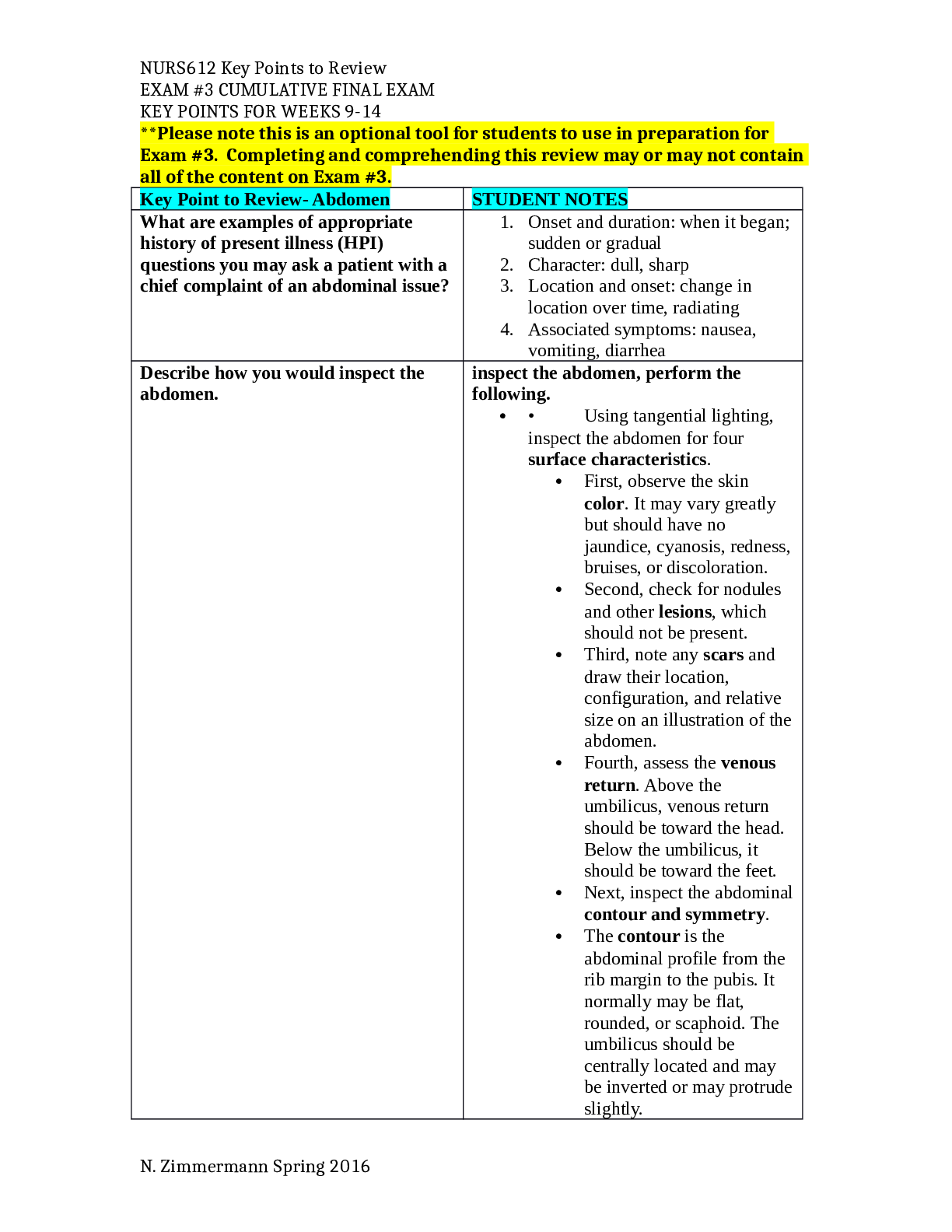
Buy this document to get the full access instantly
Instant Download Access after purchase
Add to cartInstant download
Reviews( 0 )
Document information
Connected school, study & course
About the document
Uploaded On
Apr 26, 2021
Number of pages
64
Written in
Additional information
This document has been written for:
Uploaded
Apr 26, 2021
Downloads
0
Views
36


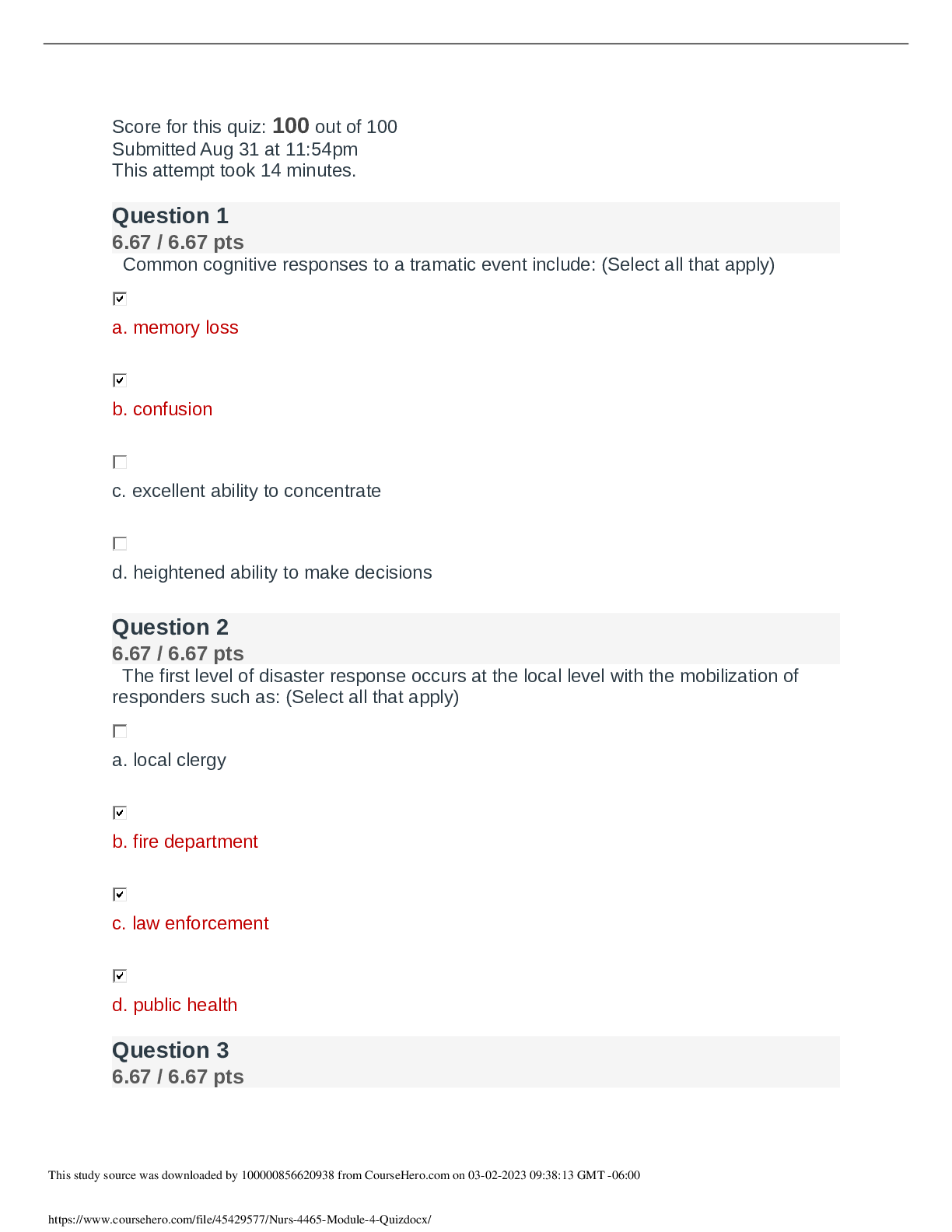
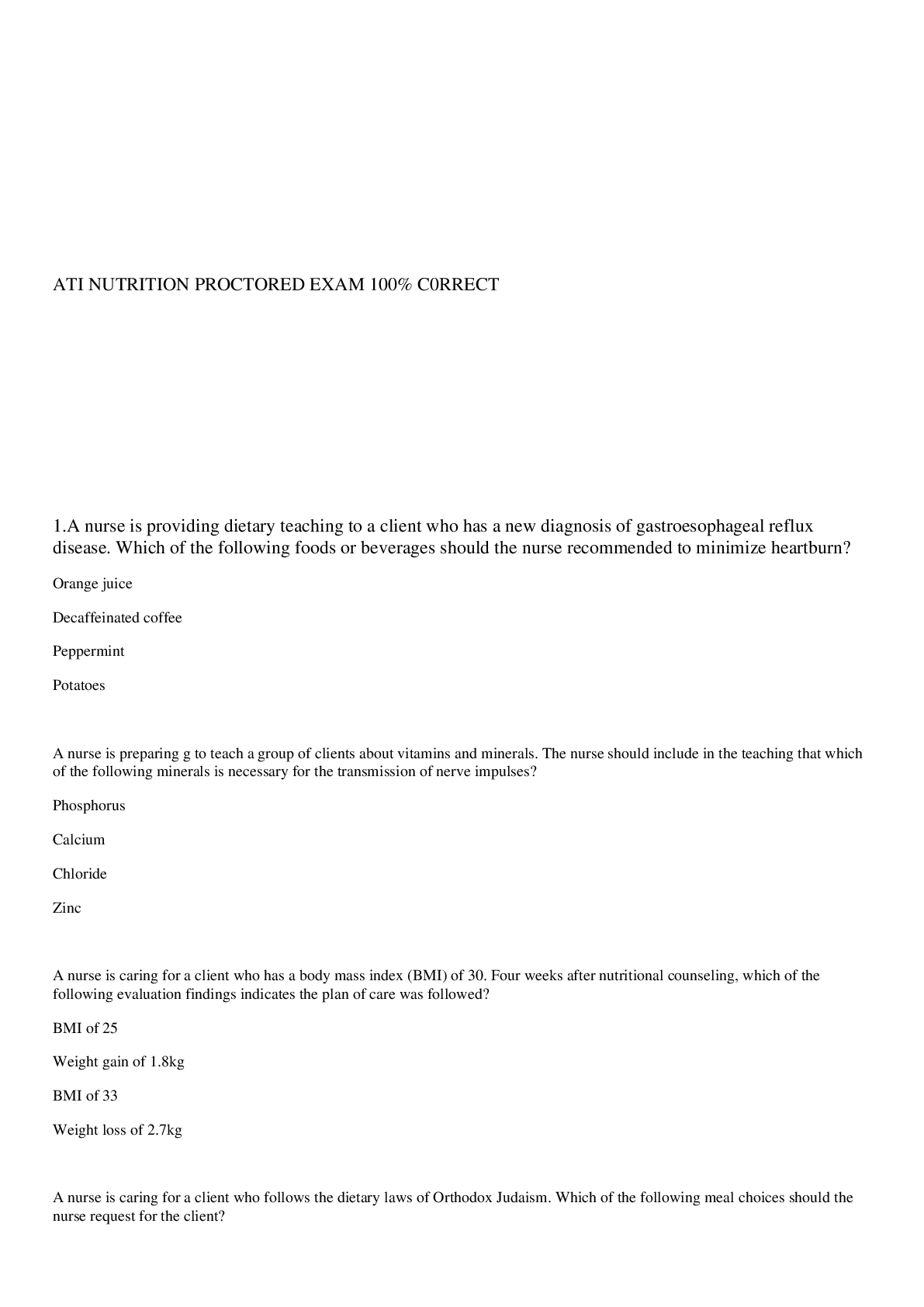
.png)
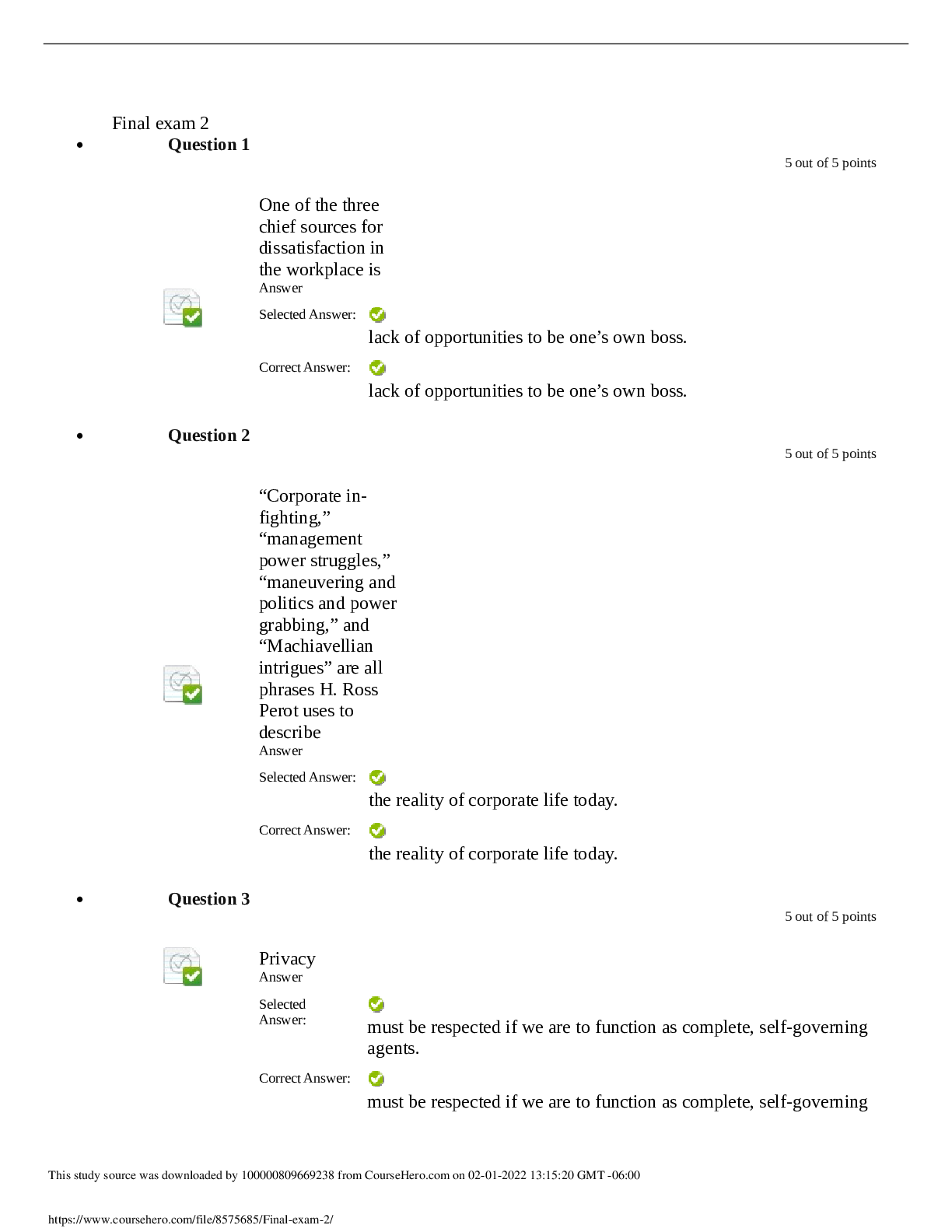
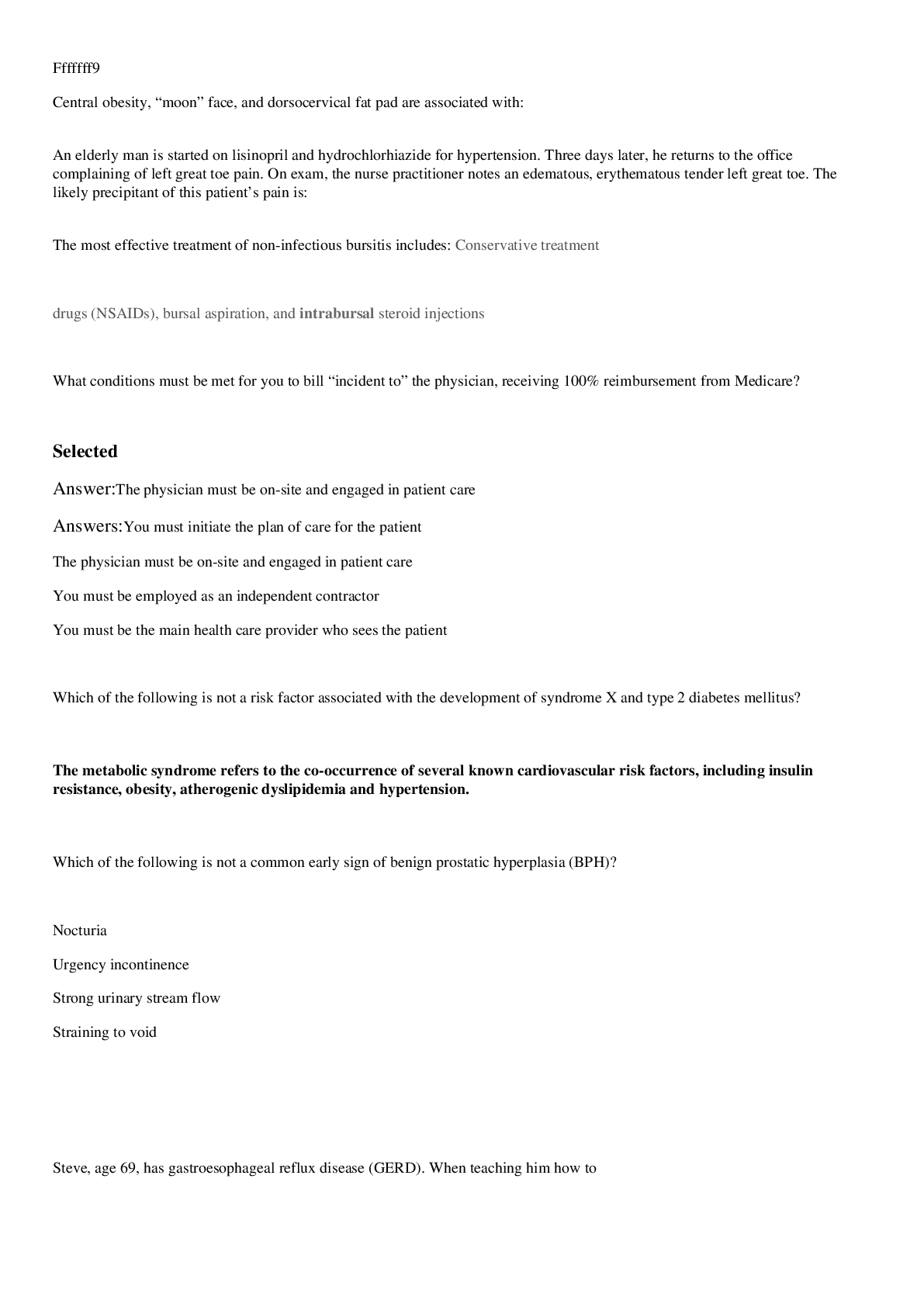

.png)
